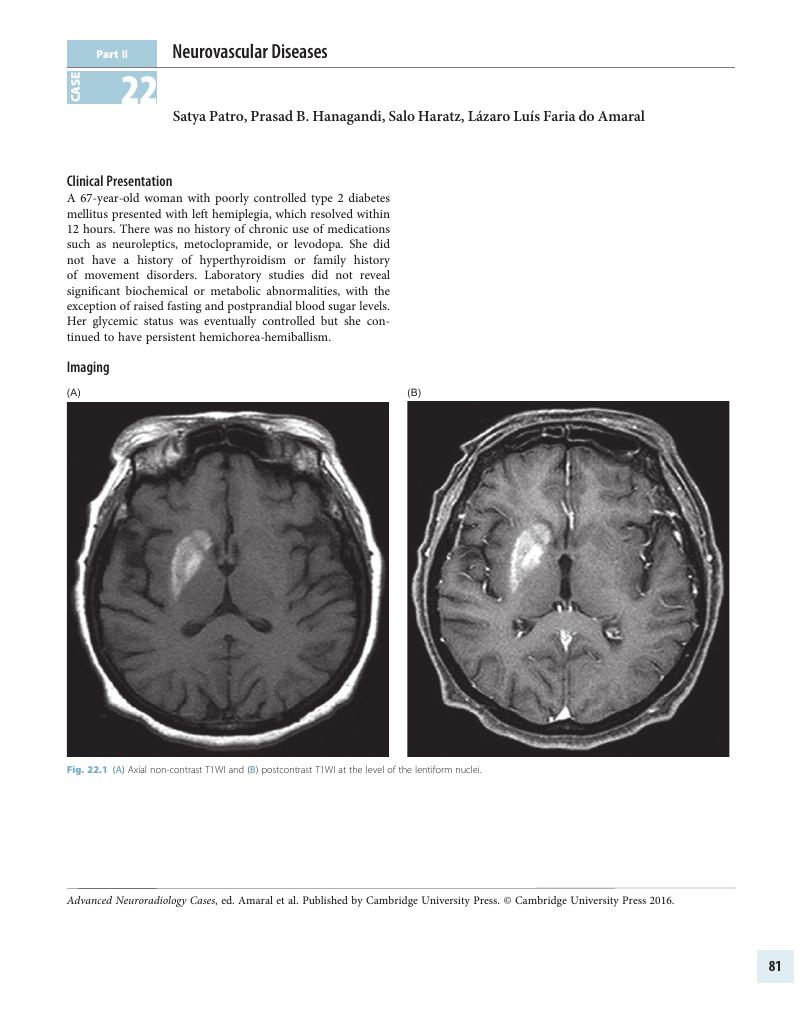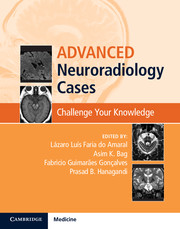Book contents
- Frontmatter
- Contents
- List of chapters with case titles
- List of contributors
- Foreword 1
- Foreword 2
- Preface
- Acknowledgements
- How to Use This Book
- Part I Neurodegenerative Diseases
- Part II Neurovascular Diseases
- 21 Asim K. Bag, Lázaro Luís Faria do Amaral
- 22 Prasad B. Hanagandi, Satya Patro, Salo Haratz, Lázaro Luís Faria do Amaral
- 23 Fabrício Guimarães Gonçalves
- 24 Asim K. Bag, Lázaro Luís Faria do Amaral
- 25 Asim K. Bag, Aparna Singhal, Fabrício Guimarães Gonçalves
- 26 Fabrício Guimarães Gonçalves, Prasad B. Hanagandi
- 27 Prasad B. Hanagandi, Leslie Lamb, Jennifer Kamps
- 28 Prasad B. Hanagandi, Santanu Chakraborty, Lázaro Luís Faria do Amaral
- 29 Asim K. Bag, Glenn H. Roberson
- 30 Prasad B. Hanagandi, Santanu Chakraborty, Lázaro Luís Faria do Amaral
- 31 Fabrício Guimarães Gonçalves, Lázaro Luís Faria do Amaral
- 32 Lázaro Luís Faria do Amaral, Lucídio Portella Nunes Neto, Christiane Monteiro Siqueira Campos
- 33 Lázaro Luís Faria do Amaral, Anderson B. Belezia
- 34 Prasad B. Hanagandi, Jeffrey Chankowsky, Raquel del Carpio-O'Donovan
- 35 Lázaro Luís Faria do Amaral, Lucídio Portella Nunes Neto, Christiane Monteiro Siqueira Campos
- 36 Lázaro Luís Faria do Amaral, Leonardo Furtado Freitas
- 37 Lázaro Luís Faria do Amaral, César Augusto P. F. Alves
- Part III Neuroinfectious Diseases
- Part IV Neuroinflammatory Diseases
- Part V Metabolic Diseases Involving Central Nervous System
- Part VI Central Nervous System Tumors
- Part VII Congenital Diseases Manifesting in Adults
- Part VIII Miscellaneous
- Index
- References
22 - Prasad B. Hanagandi, Satya Patro, Salo Haratz, Lázaro Luís Faria do Amaral
from Part II - Neurovascular Diseases
Published online by Cambridge University Press: 06 January 2017
- Frontmatter
- Contents
- List of chapters with case titles
- List of contributors
- Foreword 1
- Foreword 2
- Preface
- Acknowledgements
- How to Use This Book
- Part I Neurodegenerative Diseases
- Part II Neurovascular Diseases
- 21 Asim K. Bag, Lázaro Luís Faria do Amaral
- 22 Prasad B. Hanagandi, Satya Patro, Salo Haratz, Lázaro Luís Faria do Amaral
- 23 Fabrício Guimarães Gonçalves
- 24 Asim K. Bag, Lázaro Luís Faria do Amaral
- 25 Asim K. Bag, Aparna Singhal, Fabrício Guimarães Gonçalves
- 26 Fabrício Guimarães Gonçalves, Prasad B. Hanagandi
- 27 Prasad B. Hanagandi, Leslie Lamb, Jennifer Kamps
- 28 Prasad B. Hanagandi, Santanu Chakraborty, Lázaro Luís Faria do Amaral
- 29 Asim K. Bag, Glenn H. Roberson
- 30 Prasad B. Hanagandi, Santanu Chakraborty, Lázaro Luís Faria do Amaral
- 31 Fabrício Guimarães Gonçalves, Lázaro Luís Faria do Amaral
- 32 Lázaro Luís Faria do Amaral, Lucídio Portella Nunes Neto, Christiane Monteiro Siqueira Campos
- 33 Lázaro Luís Faria do Amaral, Anderson B. Belezia
- 34 Prasad B. Hanagandi, Jeffrey Chankowsky, Raquel del Carpio-O'Donovan
- 35 Lázaro Luís Faria do Amaral, Lucídio Portella Nunes Neto, Christiane Monteiro Siqueira Campos
- 36 Lázaro Luís Faria do Amaral, Leonardo Furtado Freitas
- 37 Lázaro Luís Faria do Amaral, César Augusto P. F. Alves
- Part III Neuroinfectious Diseases
- Part IV Neuroinflammatory Diseases
- Part V Metabolic Diseases Involving Central Nervous System
- Part VI Central Nervous System Tumors
- Part VII Congenital Diseases Manifesting in Adults
- Part VIII Miscellaneous
- Index
- References
Summary

- Type
- Chapter
- Information
- Advanced Neuroradiology CasesChallenge Your Knowledge, pp. 81 - 86Publisher: Cambridge University PressPrint publication year: 2016



